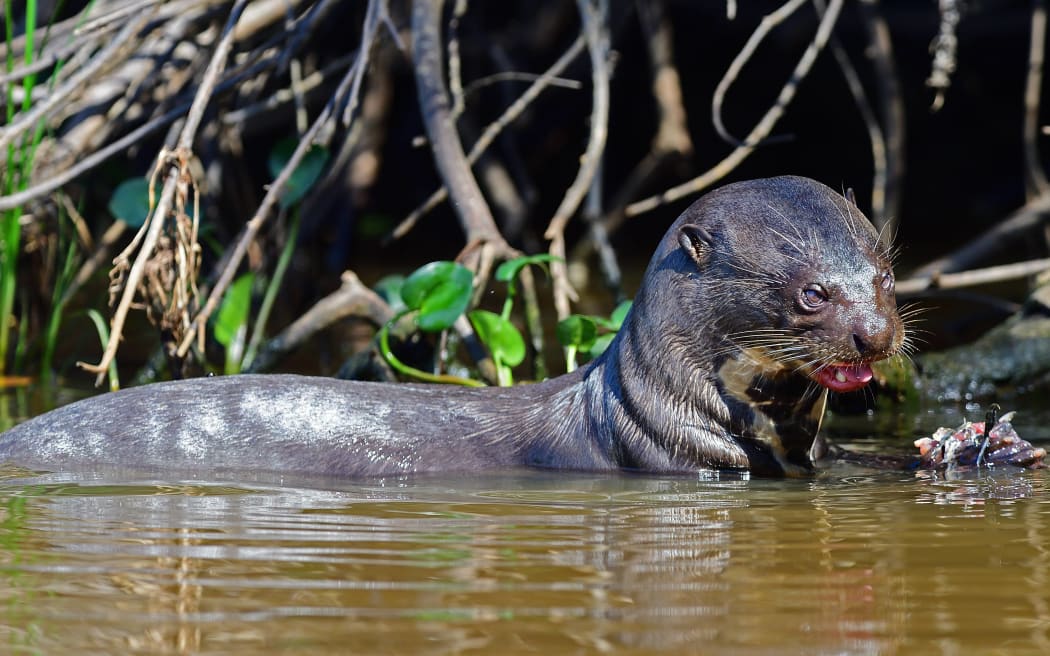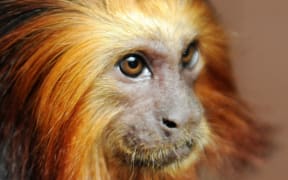A giant otter that roamed southwestern China six million years ago had a surprisingly strong bite and could have been a top predator, say scientists.

Giant otter (Pteronura brasiliensis), Pantanal, Mato Grosso, Brazil, South America. Photo: AFP
Studies of the animal's fossilised skull reveal that it had the chewing ability of a bear.
Unlike its living relatives, which feed on fish and shellfish, the otter may have eaten a wide range of prey.
It was capable of crushing big mollusc shells or the bones of birds and rodents, according to a new study.
The research, published in the journal Scientific Reports, provides insight into the life of this oversized otter.
Known as Siamogale melilutra, it weighed more than 50kg and was the size of a wolf.
Not only was it larger than living otters, but its jaws were more powerful.
"We conducted a series of engineering simulations on the jaw models of fossil otters as well as ten living otter species and what we found was that the fossil otter had a jaw that was six times as strong as expected, based on what we see in living species," Jack Tseng of the University of Buffalo, who led the research, said.
The fossil record of the animal is incomplete. The few skull fragments that have been discovered were found in what was once a swamp or shallow lake surrounded by evergreen forest or dense woodland.
The site, known as Shuitangba, has yielded hundreds of fossils of animals and plants, which are exceptionally well preserved.
"There was a diverse aquatic fauna at Shuitangba, including fish, crab, molluscs, turtles and frogs, as well as many different species of water birds, all of which could have been potential prey for S. melilutra," said Denise Su, a paleoecologist at the Cleveland Museum of Natural History.
The animal's size and jaw strength would have made it a formidable hunter.
Although scientists can't be sure, they think the otter was unusual in exploiting a varied diet.
"Carnivores are known to evolve powerful jaws, often for the purpose of cracking the bones of their prey," said Xiaoming Wang, a curator in the Vertebrate Paleontology Department of the Natural History Museum of Los Angeles County.
"In the shallow swamp of South China, it's possible that an abundance of big clams drove these giant otters to acquire their rare traits, including their crushing teeth and robust jaws."
Otters are carnivorous mammals that are adapted to hunting and living in and around water.
The 13 living otter species are found throughout the Americas, Europe, Asia and Africa.
The otter is found across the UK, where it is gradually returning to rivers after years of conservation efforts.
- BBC


